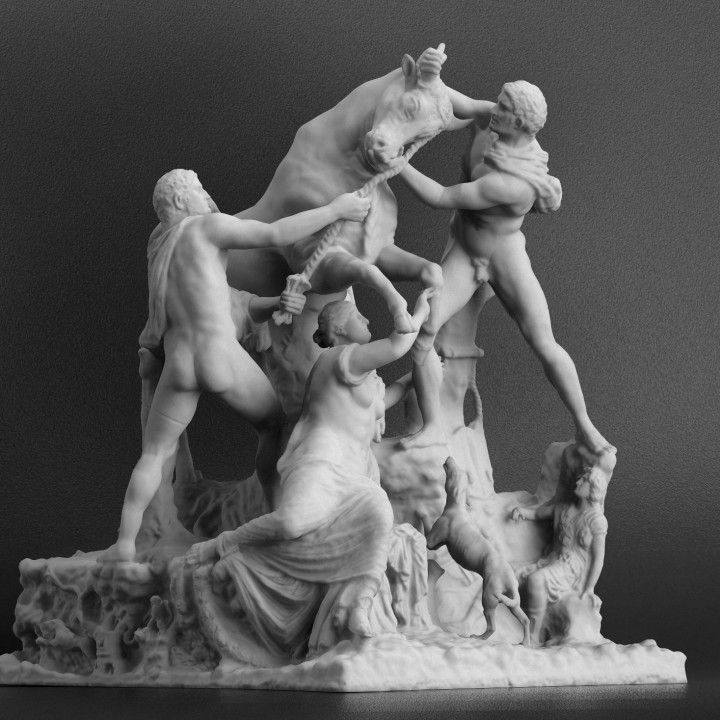
The Farnese Bull
myminifactory
The Farnese Bull, also known as the Toro Farnese (also referred to as the Dirce's Torment) or simply the bull from ancient Rome, is a colossal Roman replica of a Hellenistic original group sculpture. It stands out as the largest single sculpture ever found in antiquity, carved from a single block of marble - though it was discovered in 1546 in fragments. The work was excavated at the gymnasium of the Roman Baths of Caracalla, commissioned by Pope Paul III in the hope of finding ancient sculptures to adorn the Palazzo Farnese. The sculpture dates back to the Severian period (A.D. 222-235). Unlike other discoveries from this excavation like the Farnese Hercules and the Latin Hercules, there is only one reference to this grouping, found in a 1595 engraving by Etienne du Perac of the ruins of the Baths, showing the end of the east palestra, which states: "...in the time of Paul III many fragments of statues and animals were found that were all in one piece in antiquity...and Cardinal Farnese had [it] erected now in his Palazzo." Pliny The Elder mentions what was presumably the prime version of it as the work of the Rhodian artists Apollonius of Tralles and his brother Tauriscus, stating that it was commissioned at the end of the 2nd century BCE. It was imported from Rhodes as part of the remarkable collection of artwork and sculpture owned by Asinius Pollio, a Roman politician who lived during the years between the Republic and the Principate. Along with the rest of the Farnese antiquities, the sculpture has been part of the Museo Archeologico Nazionale Napoli in Naples (inv. no. 6002) since 1826. The sculpture has undergone numerous restorations, incorporating sixteenth, eighteenth, and nineteenth-century styles from differing qualities of marble, not necessarily true to the original composition. A substantial restoration was done in the 16th century, when Michelangelo planned to use it for a fountain to be installed at the centre of a garden between the Palazzo Farnese and Villa Farnesia. In 1883, the original sculpture was noted by Domenico Monaco, curator of the (then) National Museum in Naples, to have been carved from a block of marble measuring 3.66m x 2.75m. As it is today, the sculpture weighs 21.8 tonnes. The subject of this group represents the myth of Dirce from the Theban saga. She was tied to a wild bull by the sons of Antiope, Zethus and Amphion, who wanted to punish her for the ill-treatment inflicted on their mother, first of Lycus, King of Thebes. The bull dragged her to death, and from her blood sprang the fountain of Thebes that is called by her name. The scene is full of terror and daring, and though wrought in the cool, snowy marble, it is quivering with intense passion and frenzied malice. It appears that at any minute the bull may break away and their vengeance be foiled.
With this file you will be able to print The Farnese Bull with your 3D printer. Click on the button and save the file on your computer to work, edit or customize your design. You can also find more 3D designs for printers on The Farnese Bull.
